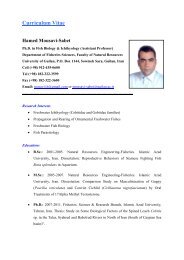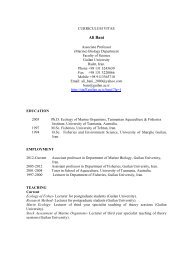Medical Tourism in Developing Countries
Medical Tourism in Developing Countries
Medical Tourism in Developing Countries
- No tags were found...
Create successful ePaper yourself
Turn your PDF publications into a flip-book with our unique Google optimized e-Paper software.
46 ● <strong>Medical</strong> <strong>Tourism</strong> <strong>in</strong> Develop<strong>in</strong>g <strong>Countries</strong>time they became ill, and those who embarked on the trip especially toconsume specific services.Incidental <strong>Medical</strong> TouristsSome eight percent of travelers to develop<strong>in</strong>g countries require medical carewhile on their trip (or immediately after). 16 Usually it is for the treatmentof diarrhea, although for travelers to Africa, the primary reason is malaria.These are not illnesses tourists plan for, and therefore, their treatment isalso unplanned. To the extent that these patients made use of LDC healthfacilities, that was not the primary goal of their trip so they are not, strictlyspeak<strong>in</strong>g, medical tourists who have traveled with the purpose of improv<strong>in</strong>gtheir health. They are nevertheless <strong>in</strong>cluded <strong>in</strong> this study because theydemand the same services as other foreign patients. While there are no disaggregatedstatistics on the numbers of such <strong>in</strong>cidental medical tourists <strong>in</strong>the countries under study, some sporadic evidence is available: for example,of the tourists and bus<strong>in</strong>essmen who traveled to Thailand <strong>in</strong> 1977, fivemillion got sick and one half of those received medical care. 17Foreigners who require <strong>in</strong>cidental medical care <strong>in</strong> develop<strong>in</strong>g countriescan be divided <strong>in</strong>to two categories accord<strong>in</strong>g to the duration of their visit.Long-term stayers <strong>in</strong>clude students purs<strong>in</strong>g tra<strong>in</strong><strong>in</strong>g or degree courses thatrequire residence of several months or years. Cuba, South Africa, and Indiaattract students from neighbor<strong>in</strong>g countries where the educational system is<strong>in</strong>ferior and/or costlier. In the course of their studies, these students are likelyto have medical problems that are resolved by the local health-care system.Another group of long-term stayers are foreign workers. They aremigrants or expatriates work<strong>in</strong>g <strong>in</strong> mult<strong>in</strong>ational or national enterprises(<strong>in</strong> countries such as Chile, many expatriates came with the spread of mult<strong>in</strong>ationals<strong>in</strong> the 1980s and 1990s 18 ). Like students, given the duration oftheir stay, it is expected that they will use the health-care system.Retirees from more developed countries sometimes move to less developed(and warmer) countries where their pensions go further and they canmore comfortably live out their old age. For this reason, Americans aredrawn to Mexico and Costa Rica. Japanese retirees are known to spendentire w<strong>in</strong>ters <strong>in</strong> beach resorts across Asia where their expenses are lowerthan at home (this phenomenon is called long-stay tourism, a grow<strong>in</strong>gniche). 19 Given their age and the duration of their stay, these retirees arelikely to become ill and use local medical services.Foreign residents of LDCs are unlikely to use the national public healthsystem. Instead, they will use private sector services that medical tourists orwealthy citizens use.
















